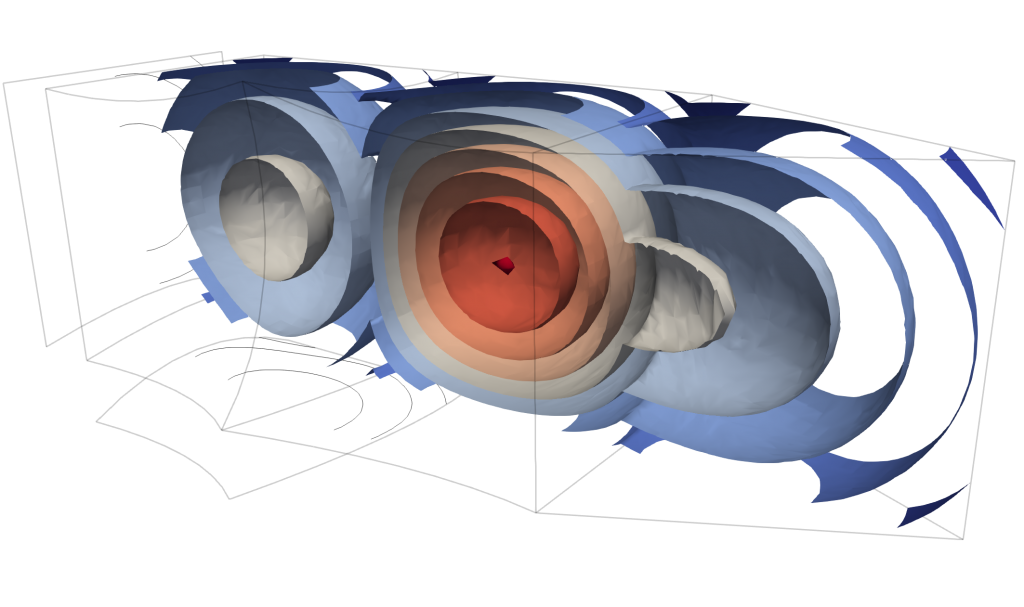
Multiple input connections, you can select multiple modules, just like in the Repeat the step for the other input port(s). Select the pipeline module(s) that are to be connected to this input port. To use thisĭialog, first select the Input Port you want to edit on the left side, and 5.3 The Change Input Dialog is shown to allow you to pick inputs forĮach of the input ports for a filter with multiple input ports.
#Paraview connectivity free
You are free to change those as well.įig. The active source(s) is connected byĭefault to the first input port. This dialog allows you to select the pipeline modules to beĬonnected to each of the input ports. In such a case, when you click on the filter name, the Change Input Dialog will pop up, as seen in Fig. Certain filters, such as Resample With Dataset, have multiple inputs that must be set up before the filter can beĬreated. Name in the Filters menu, it will create a new filter instance and that Hence, as soon as you click on the filter The Append Datasets filter has two input connections on its 5.2 The Pipeline Browser showing a pipeline with multiple inputĬonnections. When multiple pipeline modules are selected, only the filters thatĪccept multiple connections on their input ports will be enabled in theįig. Relevant pipeline modules in the Pipeline Browser. Modules as connections on a single input port of a filter, select all the In such a case, to pass multiple pipeline Filters like Append Datasets can take multiple inputĬonnections on that input port. When you create a filter, the active source is connected to the first input port Menu item, the status bar will show the reason why the filter is not available.
#Paraview connectivity windows
On Windows and Linux machines, if you hover over the disabled Source(s) is not producing data of the expected type or the characteristics neededīy the filter. If a menu item in the Filters menu is disabled, it implies that the active If a menu item is disabled, it implies that the active sourceĭoes not produce data that can be transformed by this filter. To make it active, and then click on the corresponding menu item in theįilters menu. The data produced by a source or a reader, you select the source in the Pipeline Browser These are organized in various categories. Creating filters in paraview Īll available filters in paraview are listed under the Filters The properties available depend on the filter itself. Similar to readers, the properties on the filter allow you to control theįiltering algorithm. Whether a particular input port can accept one or many input connections. Multiple connections for each of the datasets to be appended. Each input port can optionally accept multiple inputĪn input port itself can optionally accept multiple input connections, e.g., theĪppend Datasets filter, which appends multiple datasets to create a singleĭataset only has one input port (named Input ). A filter can have one or more inputĪnd output ports. Produces the resulting data on its outputs. 5.1 A filter is a pipeline module with inputs and outputs.ĭata enters a filter through the inputs. Through which the dataset used as the mesh on which to re-sample is accepted.)įig. The other, called Source, is the input port Is the input port through which the dataset providing the attributes to

Resample With Dataset filter has two input ports. Input data for a specific purpose or role within the filter. The number of input and output ports on a filter is fixed. A filter can have multiple input and output ports. They take in data on their inputs and produce transformed data or In ParaView, filters are pipeline modules or algorithms that have inputs and Pipelines to transform data using such filters. Various visualization techniques such as slicing, contouring, clipping, etc., The true power of the visualization process, however, comes from leveraging the Represented in one the existing views, then that is all you would need. If the data ingested into ParaViewĪlready has all the relevant attribute data, and it is in the form that can be directly
#Paraview connectivity how to
Into ParaView ( Section 2) and how to display it in In previous chapters, we saw how to ingest data Through this pipeline, being transformed at each node until it is in a form where (collectively called pipeline modules or algorithms). Paradigm where a pipeline is set up of sources, filters, and sinks Section 1.2 formalizes this concept as a data flow Produced from experiments or simulations until it takes a form in which it can be Visualization can be characterized as a process of transforming raw data


 0 kommentar(er)
0 kommentar(er)
